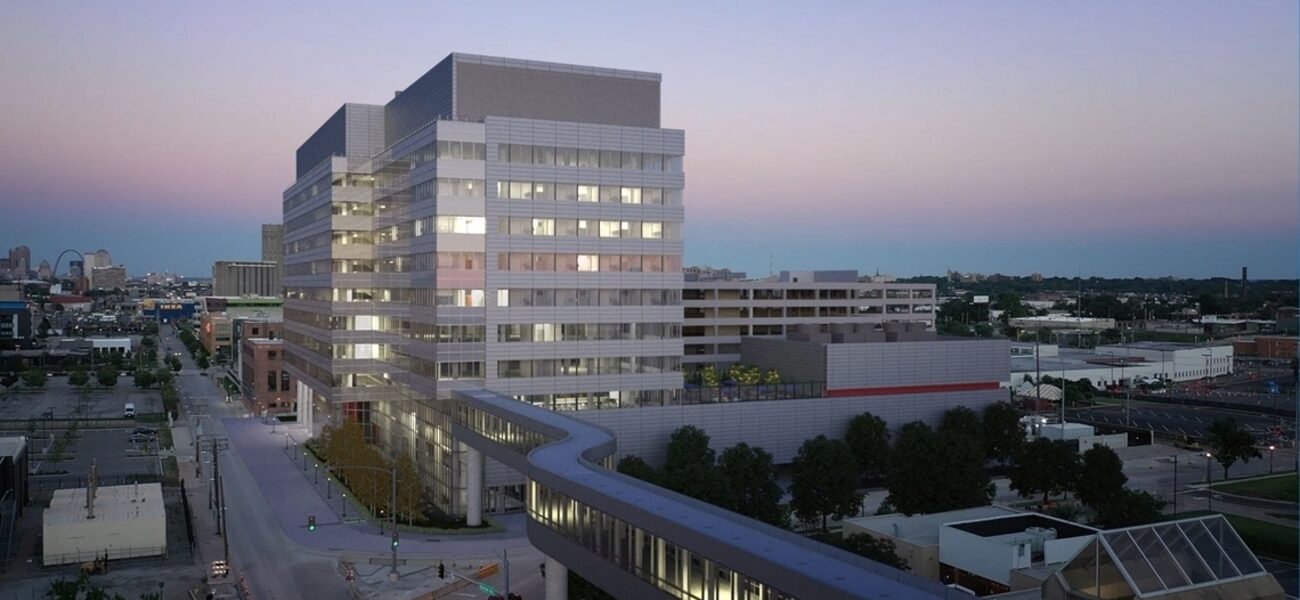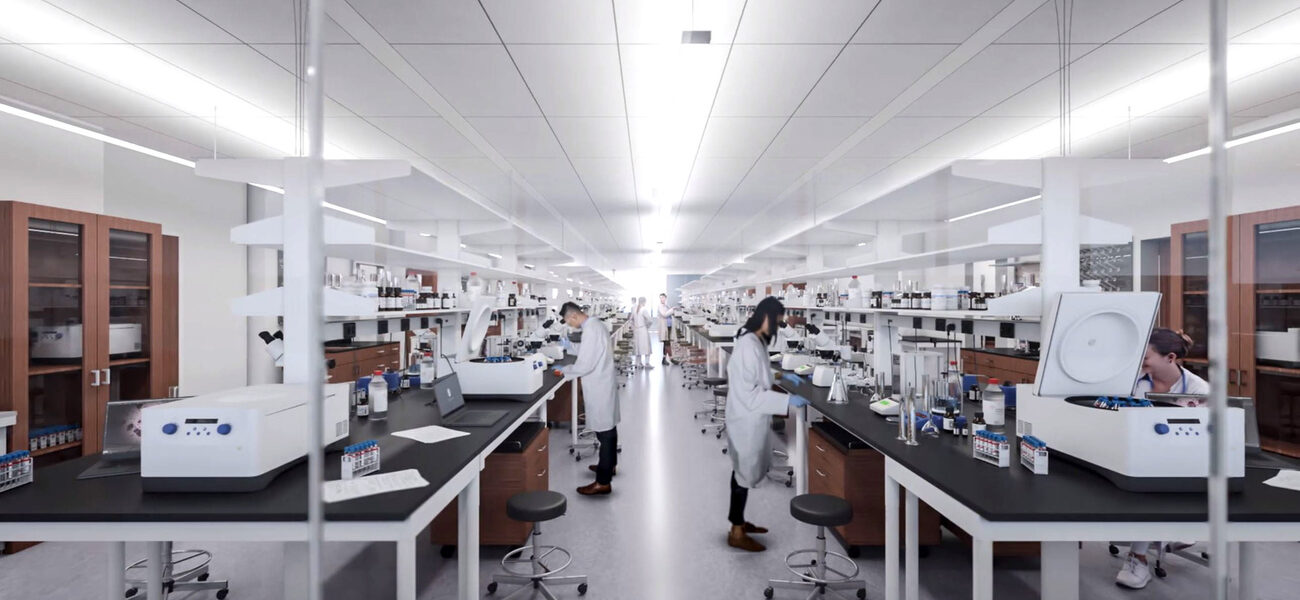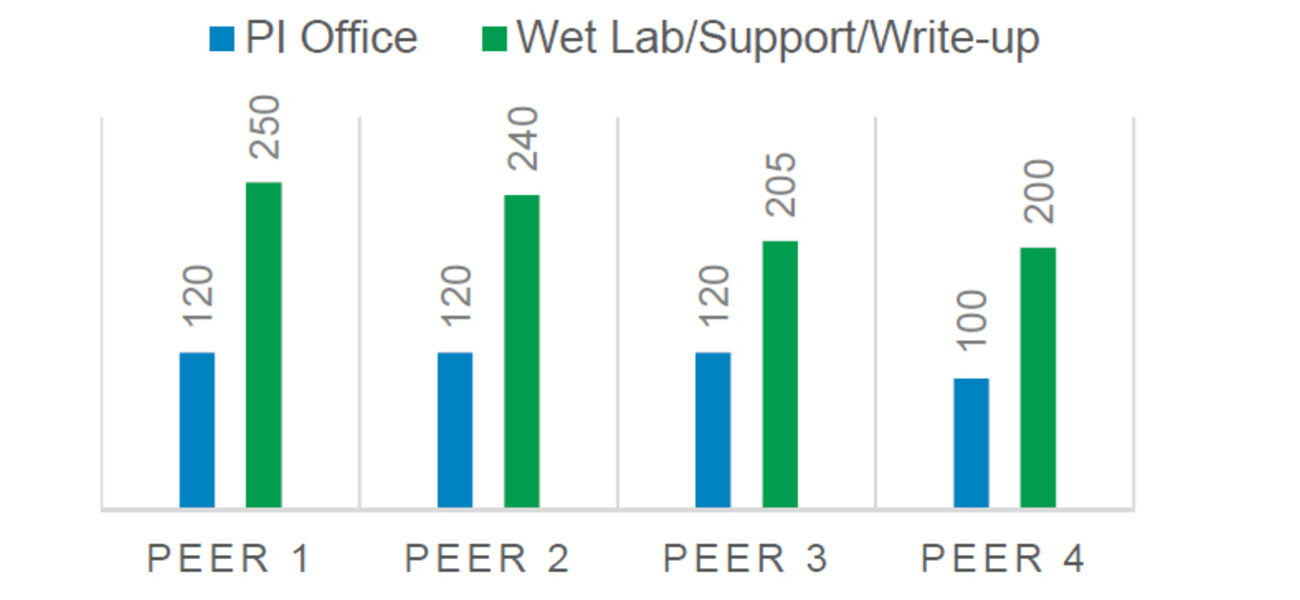Data-driven tools that objectively measure the utilization and productivity of lab space can provide academic institutions with valuable insights for making key budget decisions about renovation, new construction, and allocation of existing resources. In 2018, space planners at Washington University School of Medicine (WUSM) in St. Louis, Mo., set out to quantify the utilization of wet lab space as part of an effort to achieve ambitious growth and recruiting goals. The process led to the creation of a rolling five-year needs study with annual reporting of lab space utilization and researcher productivity using benchmarked performance metrics. The reporting tool now provides university administrators with accurate, objective data on a yearly basis that helps them better utilize existing resources, improve adjacencies, and validate the potential need for renovations and new construction.
The methodology was developed to support the school’s recruiting and growth targets set by the dean of the School of Medicine. In order to support the recruitment goals, existing research space needed to be optimized and possibly reorganized for maximum efficiency, so an effort was launched to assess current lab utilization and productivity. The original study was so successful it has since become an ongoing rolling study with annual updates that continue to inform the space needs of a five-year growth plan for all on-campus space. This optimization was later aligned with the addition of new space to support the campus 10-year expansion plan.
“After people, space is our greatest asset, so, we try to establish a campus culture where space is seen as a community asset rather than a departmental or individual asset,” says Mariah Harris, director of space programming at WUSM. “It can be challenging, but it goes a long way when you are trying to optimize existing research space. When space utilization is optimized, it means more dollars are going toward the innovative research happening in that lab.”
Data from the first year of the study (fiscal year 2018-2019) confirmed that, even with a best effort utilization of existing space, WUSM would need more research space to achieve the dean’s recruiting goals by 2027. As a result, the assessment validated the need to build a new 11-story, 609,000-sf Neuroscience Research Building. The state-of-the-art facility will provide space for dozens of research teams consisting of approximately 875 researchers from different departments, including neuroscience, neurosurgery, neurology, psychiatry, and anesthesiology. Designed by CannonDesign in partnership with Perkins+Will, it will be one of the largest neuroscience research buildings in the country when it opens in 2023.
After the success of the initial study, the planning department—assisted by consultants from HERA Laboratory Planners and KWK Architects—set out to create a tool for ongoing assessment of the entire campus. Built in Excel, each department has a workbook and dashboard that shows detailed metrics for utilization and performance at the principal investigator (PI) level. The yearly study assesses more than 900,000 net assignable square feet of wet labs, support space, PI offices, and write-up areas for 21 departments—including a breakdown of space used by 19 divisions within the Department of Medicine—and 10 standalone centers across the medical school. Each department, division, and center is evaluated for both utilization and performance.
“It has proven to be a very useful resource for producing actionable data. Administrators, planners, and department heads use the information on a daily basis to guide decision making and recruitment planning,” says Harris.
Measuring Lab Utilization and Productivity
The utilization tool is used to identify underutilized space within a department’s portfolio so it can be optimized within the department or reallocated as needed. The metric for measuring space utilization is net assignable square feet per full-time equivalent (FTE) personnel, in addition to the principal investigator’s office.
Another valuable measurement tool is quantifying researcher productivity in relation to how many grant dollars a PI brings to the institution versus how much space they have.
WUSM defines their lab productivity metric as modified total direct costs (MTDC) divided by net assignable square foot of research space. MTDC is a standardized cost base metric established by the federal government and used for grant budgeting; it is defined as “direct salaries and wages, applicable fringe benefits, materials and supplies, services, travel, and up to the first $25,000 of each subaward.” WUSM uses it as the metric’s numerator because it quantifies the grant costs that can be specifically identified with a particular sponsored project, tying the grants back to the space.
Data Accuracy and Benchmarking Metrics
Data accuracy was essential for getting leadership buy-in and approval. To ensure collection of reliable, market-relevant metrics, the planning team worked with HERA Laboratory Planners and KWK Architects to do extensive peer benchmarking and conduct a series of on-campus pilot studies as they developed the tool.
“Benchmarking peers definitely helped confirm that our targets and metrics were on point with other medical schools and campuses,” says Harris.
That said, there are a number of metrics that can be used to quantify utilization and performance. While WUSM uses net assignable square feet per FTE to quantify utilization, other institutions may define it in terms of linear feet per bench or per person, and the target metric could be defined by multiple parameters, including type of science, type of equipment used, or the age of the building. When it comes to measuring utilization, other factors to consider may include the number of students a PI mentors and if they’re full time, part time, or just visiting.
“An investigator who mentors a large number of students may warrant an uptick of space per FTE compared to the labs of investigators who don’t mentor a lot of students. Peer benchmarking and pilot studies can help define those things. But, whatever metrics you use, creating a tool for measuring utilization and productivity can provide valuable insights for optimizing existing research space and making informed decisions about renovation projects and new construction,” says Harris.
By Johnathon Allen


